69. Prodromos, Lefkes & Piso Livadi
This post comprises a visit to Prodromos, the third village of the Marmara trinity, and a walk from there to Lefkes along the Byzantine Road. I take this walk in spring and again later when my son Benedikt is visiting. So it is a kind of mélange.
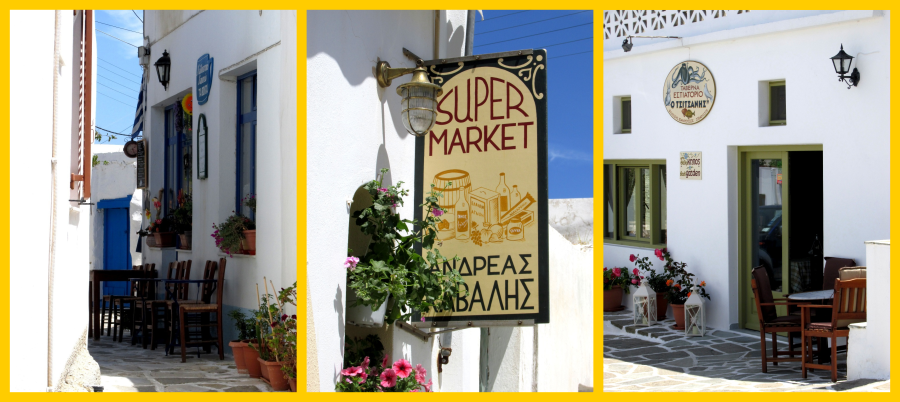
Prodromos is also in walking distance from Marmara. It’s also very nice but a little different being not on a hill side like the other villages. It boasts a nice Kafeneion, a small general store and a traditional Taverna where the serve wild rabbit and Greek salad using their own home made cheese.
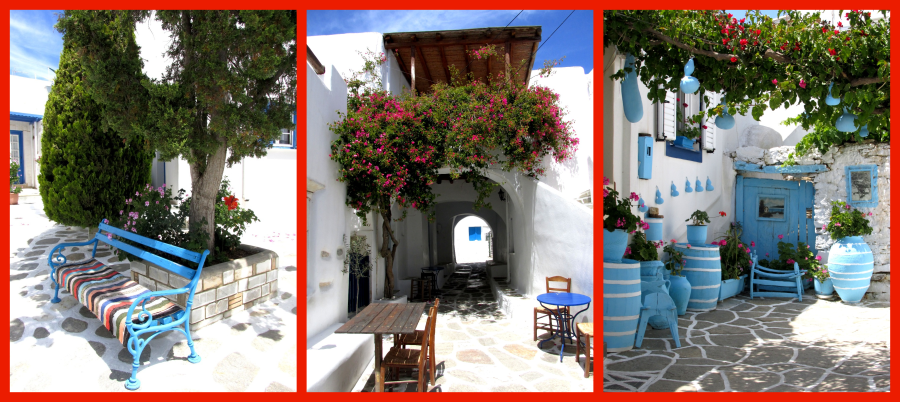
The dominant color on Paros is blue. Most of the Church domes are blue and almost all of the doors and windows of the white walled houses with a rare red or green in between. But this house which I found in Prodromos is definitely the ultimate in blue.
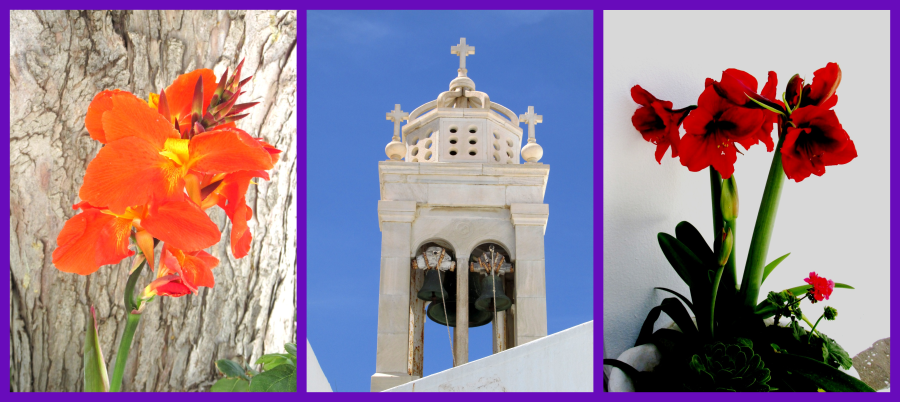
It’s Easter time right now with the bells of many churches ringing from morning till evening. Apparently it’s not like in the Catholic Church where the bells fly away to Rome during Easter to return only with the resurrection of Christ. Maybe it is because Rome for the Orthodox is Constantinople and that not a place nowadays where to send any bells.

But walking through the narrow streets of Prodromos I come across this amazing Easter decorations. It demonstrates trust - all of it out on the street with no one to protect or watch it – and it is made with loving care.
After Prodromos I have to walk for about one kilometer to reach the beginning of the Old Byzantine Highway. It was built many centuries ago to connect Parikia on the Western shore with Piso Livadi, a major port in these days on the Eastern side.
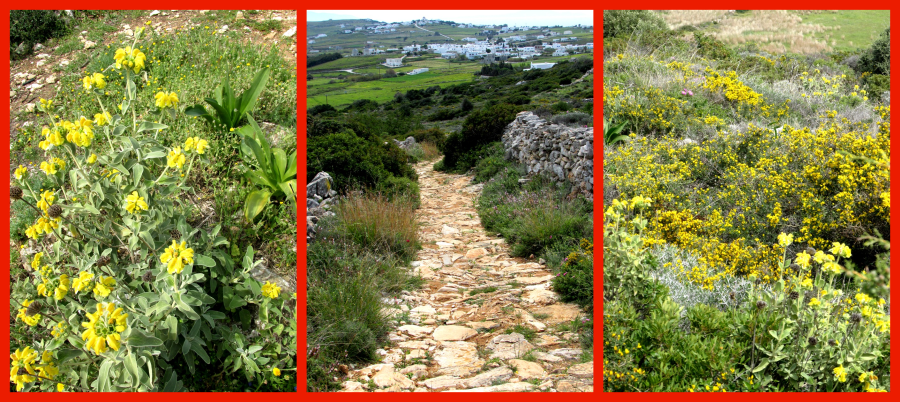
Those street builders must have done an incredible job. It is said that two oxcarts could move and pass each other on this great highway. Part of it has deteriorated over time but the remains are still impressive. And it is spring time and many shrubs are flowering in these otherwise rather arid parts of the island.

Here now there is a bit of mélange and with the help of Benedikt I can also be “in the picture”. When I walk this road with him, the weather is very fine and clear after some heavy rains. You can see it in the skies and the clouds. I like this picture sequence. On the left because it shows the distinct shape of Kefalo my “Hausberg”, my local mountain and ahead it shows Lefkes the destination of the walk.
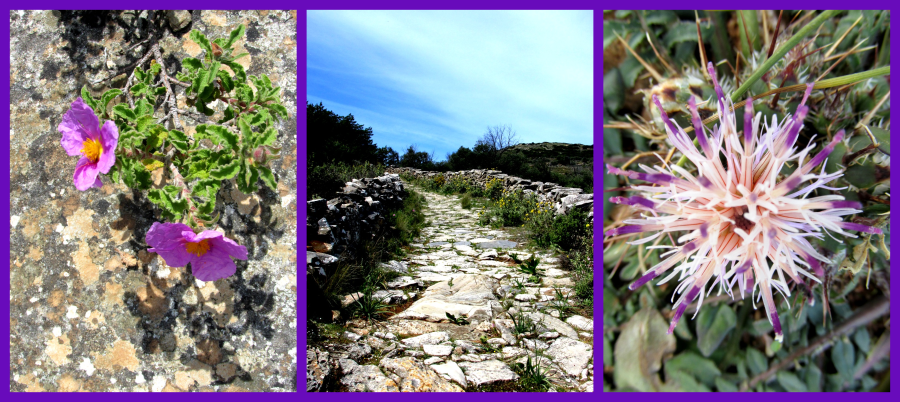
Flowers everywhere! On the right there is a famous medicinal plant of the Mediterranean, a rose of the Cistus family, called rockrose in English. If you believe all the claims being made it’s a remedy for almost everything. I have used it for making tea and it produces a nice hot beverage for a hot day. The flower on the right is also a lovely plant. It’s a kind of thistle but without thorns on the stems and just some spikes around the blossom.
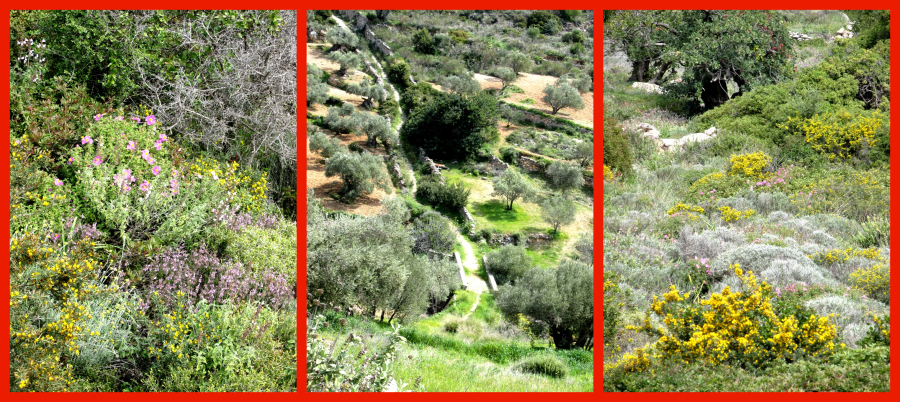
The distance from Prodromos to Lefkes is only some 4 km but at my present speed it takes me about an hour and a half. The road crosses to small ridges and traverses a fertile valley and a river bed on an ancient bridge. With enough rain it must be quite a river but rain is becoming rather scarce on Paros.

There is no sign of the river but judging from the lush grass, the olive orchards and the number of impressive cypress trees there must be a lot of water deeper down.
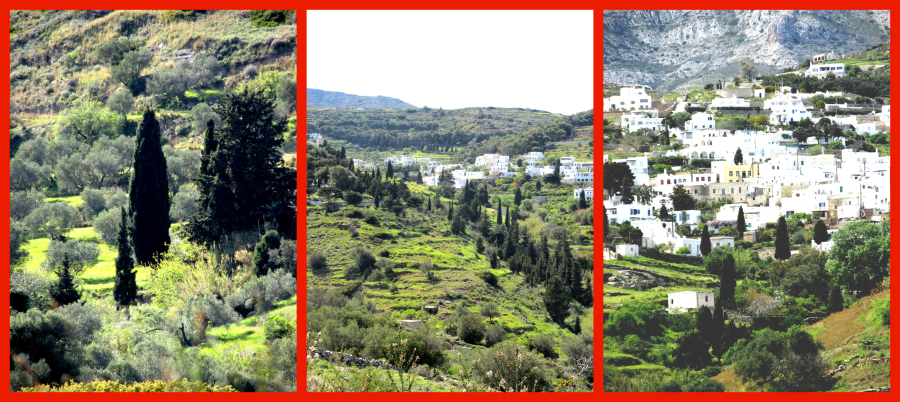
After crossing the second ridge there is a clear view of Lefkes, nestled in a valley below Pantes Mountain, the highest peak on Paros. You cannot miss it because it holds all the antennas for modern communication. It’s a shame in many ways but who I am to complain with my Smartphone and my mobile internet access. But – at least – I can hide them on the pictures I am taking.
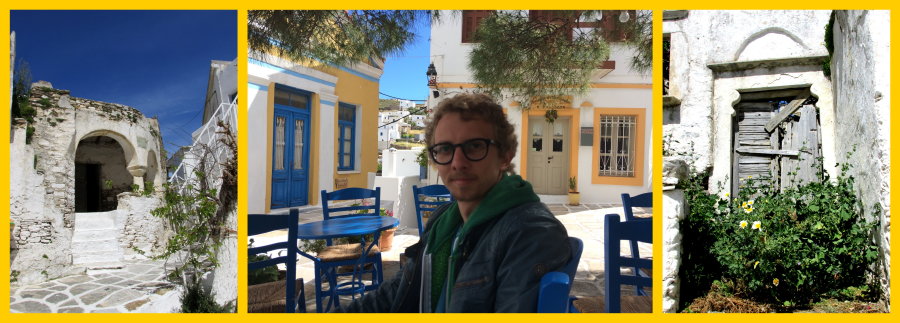
In the middle of Lefkes, among some very old houses, there is a nice Platia, the main square in every Greek village or town, usually with a big tree and a nice place to rest where Benedikt I and I enjoy some Greek coffee. On my first visit everything was still closed here, but now, three weeks later with Benedikt the town is full of Easter tourists.
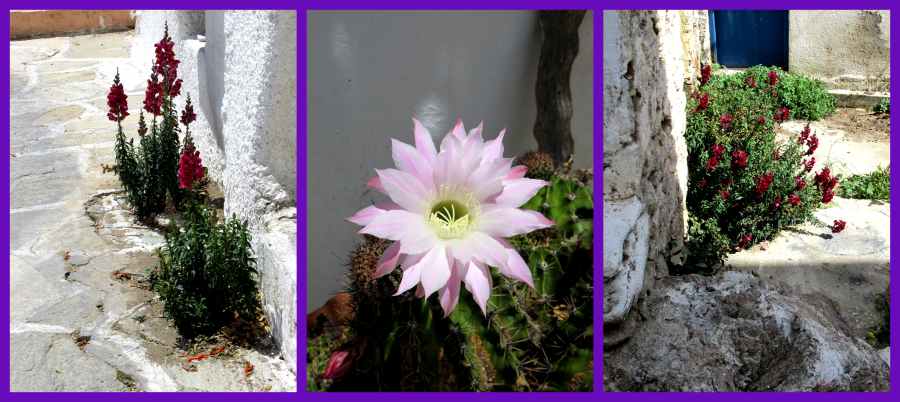
Lefkes is famous for its Snapdragon flowers. They grow everywhere between cracks I the rocks in the most impossible places. They are one of my [many] favorite plants. Another one is this flowering cactus. It reminds me of the beautiful garden of my friend Barbara in San Diego.
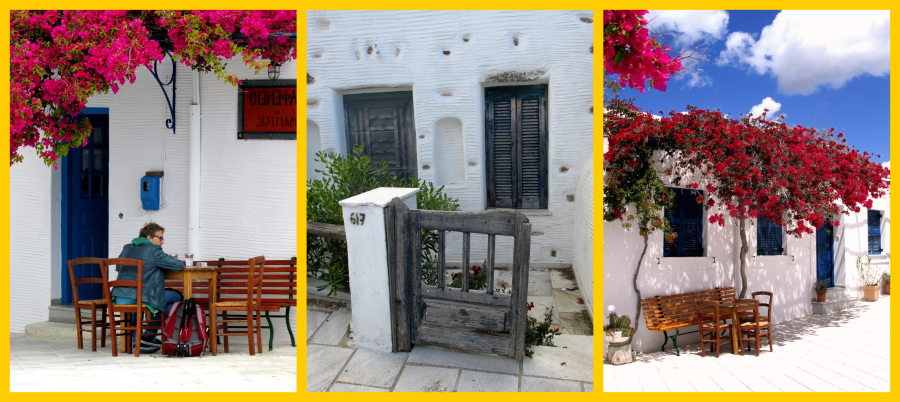
Another of the nice places in Lefkes is this small Café-Restaurant on the square in front of the big church [no picture because I think it’s rather unattractive compared to the many impressive old churches of Paros]. Almost everything served in that little Restaurant is home made. The owner lives next door with his mother who makes incredible cakes and jams. She is also a flower lady. The cactus I mentioned above grows there [corner left hand picture]. The nicely designed wooden door is from another house on the same square. It’s a very unusual style for Paros. I suspect some foreigners but the place does not seem to be lived in when I am there.
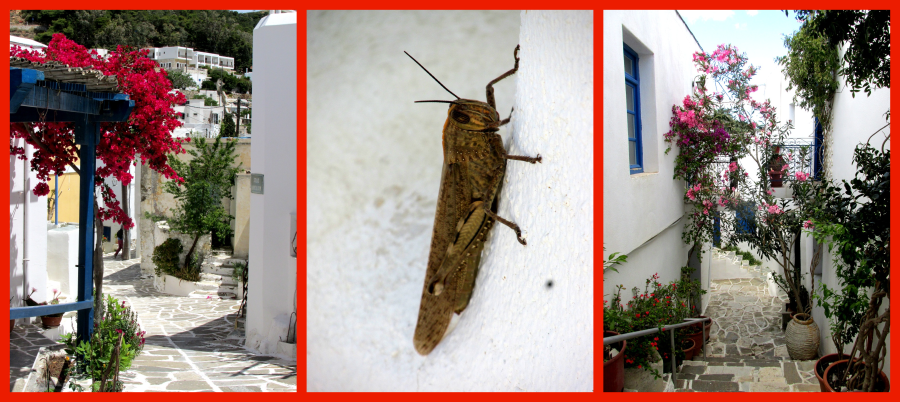
Walking thru the streets of Lefkes I discover this friendly alien. A Cicada which one normally only hears later in the year, during summer, when there is mating time. It can make quite some noise one would expect when looking at that cute creature.
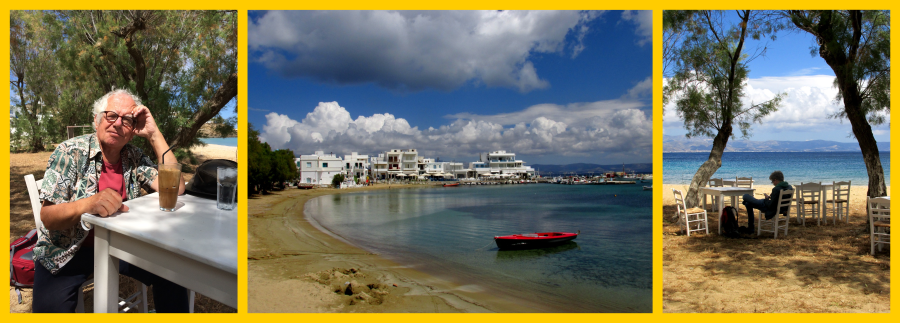
At the end of the day we visit Piso Livadi, the other destination of the Byzantine Road. I used to be the naval port in the old days of the Venetians and is now a small fishing village. There is a ferry which goes from here across the straight to Naxos in summer. I hope I can take it while I am on Paros. Next door to Piso Livadi is Logara Beach, a very nice stretch of golden sand with peaceful place at the end to relax with a cold Frappe.
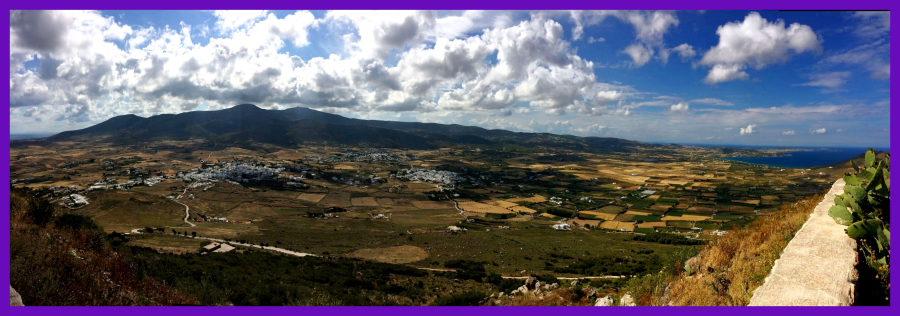
On his last day, Benedikt ventured on a little hike up to both Kefalos and Anti Kefalos. It took him a couple of hours what would take me a whole day. Anyway - he took this nice panorama shot from Ayos Antonios Monastery on Kefalo. It is a nice view of my village trinity, Marpissa, Marmara and Prodromos. It reflects a great rural harmony to me.